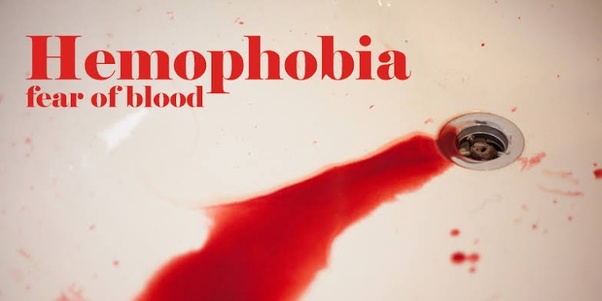Hemophobia, also known as the fear of blood, is a common phobia that can elicit intense anxiety or panic in individuals. Whether it’s the sight, thought, or even discussion of blood, hemophobes may experience physical and emotional distress. Exploring the symptoms, causes, and treatment options for hemophobia is essential for managing this fear and improving overall well-being.
Understanding Hemophobia:
Hemophobia is a specific phobia characterized by an irrational and excessive fear of blood. For those with hemophobia, encountering blood, whether it’s their own or someone else’s, can trigger a range of physical and emotional reactions. These reactions can range from mild discomfort to severe anxiety or panic attacks, making it challenging for individuals to cope with medical procedures, accidents, or even everyday situations involving blood.
Symptoms of Hemophobia:
Physical Symptoms: Hemophobes may experience symptoms such as rapid heartbeat, sweating, trembling, dizziness, nausea, and fainting when exposed to blood.
Avoidance Behaviors: Individuals with hemophobia may go to great lengths to avoid situations where they may encounter blood, such as avoiding medical appointments, hospitals, or even discussions about blood-related topics.
Emotional Distress: Hemophobia can cause significant emotional distress, leading to feelings of fear, anxiety, and embarrassment, particularly in social or medical settings.
Impact on Daily Life: The fear of blood can interfere with daily functioning, affecting personal relationships, work or school performance, and overall quality of life.
Causes and Risk Factors:
Traumatic Experiences: Previous traumatic experiences such as witnessing an injury, accident, or medical procedure involving blood can contribute to the development of hemophobia.
Learned Behavior: Observing others’ fearful reactions to blood or receiving negative messages about blood from caregivers or authority figures can reinforce hemophobic tendencies.
Genetic Predisposition: Some individuals may have a genetic predisposition to anxiety disorders, including specific phobias like hemophobia.
Cultural and Environmental Factors: Cultural attitudes towards blood, media portrayals of blood-related events, or sensationalized news stories can exacerbate existing fears of blood.
Treatment Options for Hemophobia:
Therapy: Cognitive-behavioral therapy (CBT) is the most effective treatment for hemophobia, helping individuals identify and challenge irrational thoughts and beliefs about blood and develop coping strategies for managing anxiety.
Exposure Therapy: Gradual exposure to blood-related stimuli in a controlled and supportive environment can help desensitize individuals to their fears and reduce anxiety over time.
Relaxation Techniques: Practicing relaxation techniques such as deep breathing, mindfulness, or progressive muscle relaxation can help reduce anxiety and promote a sense of calmness during blood-related situations.
Medication: In some cases, anti-anxiety medications or beta-blockers may be prescribed to alleviate symptoms of anxiety and facilitate the therapeutic process.
Conclusion:
Hemophobia, or the fear of blood, is a challenging phobia that can have a significant impact on an individual’s life. By understanding its symptoms, causes, and treatment options, individuals can seek support and resources to overcome their fear and improve their overall well-being. Seeking professional help from a mental health provider is essential for managing hemophobia and reclaiming a sense of control and confidence in blood-related situations.
Source – HealthLine



